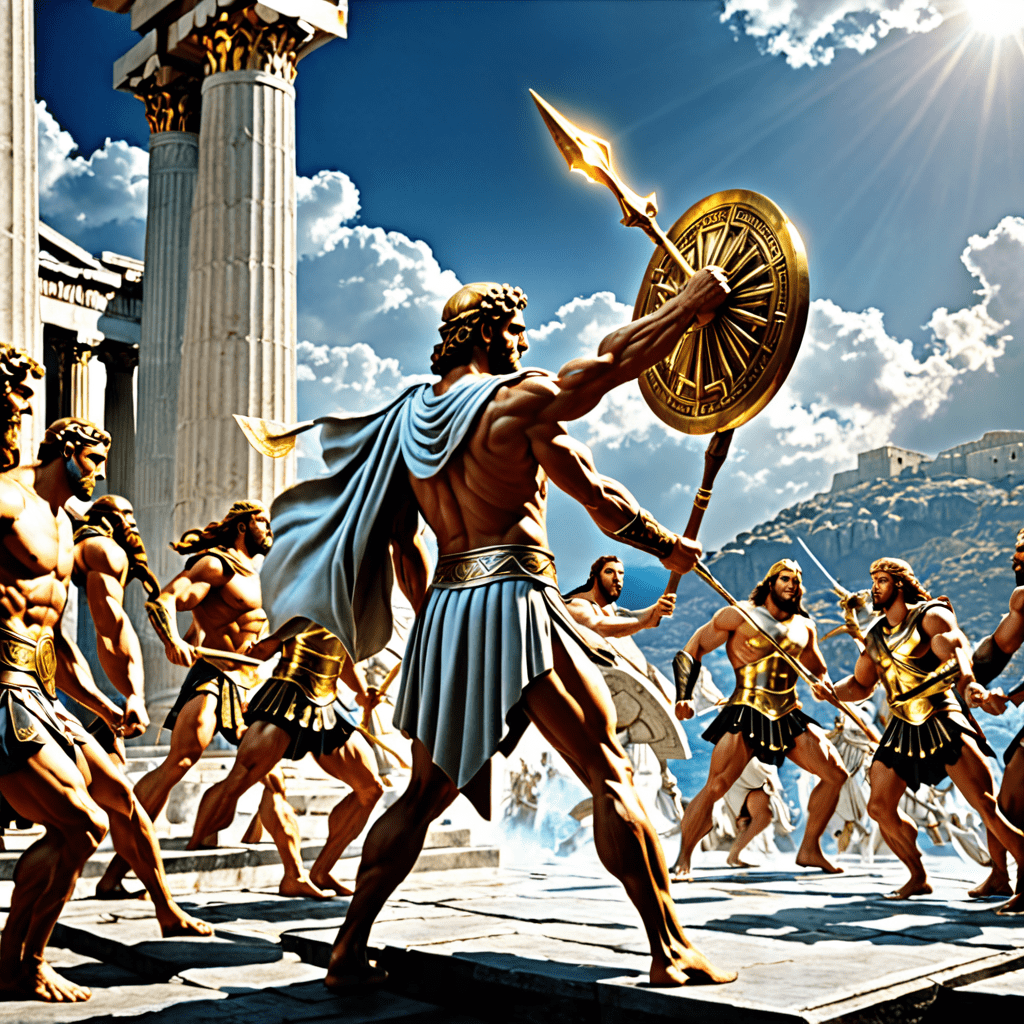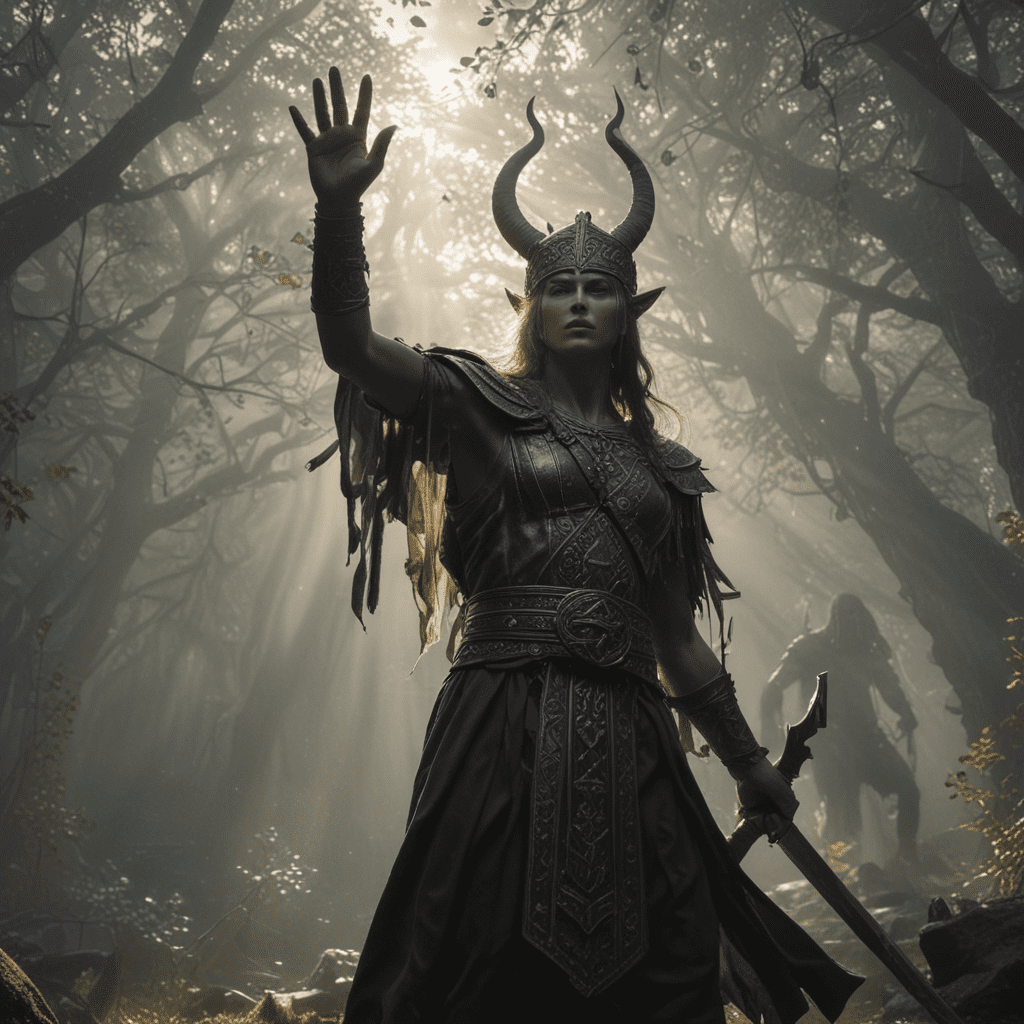From Destruction to Rebirth: The Cycle of Flood Myths Explained
I. Introduction to Flood Myths
Flood myths are powerful narratives that exist across various cultures, telling stories of catastrophic floods that lead to significant transformation. These myths often symbolize the dual themes of destruction and rebirth, highlighting humanity’s relationship with nature and the divine.
Across civilizations, flood myths share common themes and motifs, such as divine retribution, a chosen survivor, and the cleansing properties of water. By exploring these narratives, we gain insight into the cultural psyche and the collective understanding of human existence in the face of calamity.
II. Historical Context of Flood Myths
Flood myths have been a part of human storytelling for millennia, with ancient civilizations providing some of the earliest examples.
A. Ancient civilizations and their flood narratives
- Mesopotamia: The Epic of Gilgamesh – This ancient epic includes a flood narrative where Utnapishtim is warned by the god Ea to build an ark to survive a divine flood that wipes out humanity.
- Ancient Greece: Deucalion and Pyrrha – In Greek mythology, Zeus decides to flood the world, sparing only Deucalion and his wife Pyrrha, who repopulate the earth after the waters recede.
B. The role of geography and climate in shaping these myths
Many cultures developed flood myths in response to their environments. Regions prone to flooding often produced stories that reflect their struggles with nature’s unpredictability. For example, the Tigris and Euphrates rivers in Mesopotamia frequently overflowed, leading to myths that explain such occurrences.
C. The impact of historical flooding events on myth creation
Historical flooding events have also influenced these narratives. Communities that experienced devastating floods often created myths to rationalize their suffering and to convey moral lessons about human behavior and divine justice.
III. Common Elements of Flood Myths
A. The divine or supernatural cause of the flood
A recurring element in many flood myths is the notion that the flood is a result of divine intervention. Whether as punishment for human misdeeds or as a means of resetting the moral compass of society, the flood serves as a powerful symbol of divine authority.
B. The hero or chosen survivor archetype
Most flood myths feature a hero or a chosen survivor, often tasked with preserving humanity or life itself. This archetype embodies resilience and hope, representing the possibility of survival even in the face of overwhelming odds.
C. The symbolism of water as both destructive and purifying
Water in flood myths serves a dual purpose. While it can destroy lives and landscapes, it also acts as a purifying force, washing away sins and allowing for renewal. This duality reflects the complex nature of human experience and the cycle of life and death.
IV. The Psychological Perspective on Flood Myths
A. Archetypes and the collective unconscious
From a psychological standpoint, flood myths tap into archetypes found in the collective unconscious, as proposed by Carl Jung. These stories resonate with fundamental human experiences and emotions, offering comfort and understanding in times of crisis.
B. The flood as a metaphor for personal and societal crises
Floods can symbolize personal struggles, such as overwhelming emotions or life changes. On a societal level, they reflect collective crises, including wars, natural disasters, or moral failures, making them powerful narrative tools for conveying deeper truths.
C. The concept of catharsis in mythological narratives
Myths often serve as a cathartic release for communities, allowing them to process grief and trauma. The destruction caused by floods leads to rebirth, providing a narrative structure that emphasizes recovery and hope.
V. Cultural Variations in Flood Myths
A. Comparative analysis of flood myths across different cultures
- Native American myths – Various tribes have their own versions of flood narratives, often involving a great flood sent by the Creator to cleanse the earth.
- Hindu traditions: Manu and the great flood – In Hindu mythology, Manu is warned by a fish (an incarnation of Vishnu) to build a boat to survive a catastrophic flood, symbolizing the preservation of life.
- The biblical account of Noah – The story of Noah’s Ark is one of the most well-known flood myths, emphasizing themes of obedience and divine mercy.
B. Differences and similarities in themes of destruction and rebirth
While the specifics may vary, the underlying themes of destruction leading to rebirth are prevalent across these narratives. They speak to universal human concerns about morality, survival, and the hope for new beginnings.
VI. The Role of Nature in Flood Myths
A. Human relationship with nature and its chaotic forces
Flood myths reflect humanity’s complex relationship with nature, depicting it as both a nurturing and destructive force. They remind us of our vulnerability and the need for respect and harmony with the natural world.
B. Floods as natural disasters and their role in myth
Floods, as natural disasters, are often portrayed as acts of the divine in myths, serving as a cautionary tale about human hubris and the consequences of neglecting the balance of nature.
C. Environmental lessons learned from flood narratives
These narratives teach valuable lessons about resilience, adaptation, and the importance of living in harmony with the environment, emphasizing that destruction can lead to growth and renewal.
VII. The Rebirth Theme in Flood Myths
A. Rebirth as a symbol of renewal and hope
After the flood, many myths depict a rebirth of society, symbolizing hope and renewal. The survivors often rebuild their communities, signifying the possibility of a fresh start.
B. Post-flood societies and their transformations
Myths often illustrate how societies transform after a flood, adopting new values and perspectives. This transformation is a crucial aspect of the narrative, showing resilience and adaptability in the face of adversity.
C. The cyclical nature of destruction and renewal in human experience
Flood myths encapsulate the cyclical nature of existence, where destruction leads to renewal, mirroring the natural cycles of life, death, and rebirth. This cycle is a fundamental aspect of human experience, resonating deeply within our cultural consciousness.
VIII. Modern Interpretations and Adaptations of Flood Myths
A. Contemporary literature, film, and art inspired by flood myths
Flood myths continue to inspire modern storytelling, with adaptations seen in literature, film, and art. Works often reinterpret these ancient narratives through contemporary lenses, exploring themes of climate change, disaster, and resilience.
B. The relevance of flood myths in modern environmental discussions
In today’s context, flood myths serve as a metaphor for current environmental issues. They highlight humanity’s relationship with nature and the urgent need for sustainable practices in the face of climate change.
C. How flood myths inform our understanding of climate change and resilience
By examining flood myths, we can gain insights into resilience and adaptation strategies, learning from past narratives to better cope with the challenges posed by a changing environment.
IX. Conclusion: The Enduring Legacy of Flood Myths
Flood myths encapsulate profound insights into the human experience, illustrating the cycle of destruction and rebirth. They remind us of our vulnerabilities and the importance of resilience and hope in the face of adversity.
Understanding and preserving these narratives is vital, as they offer valuable lessons that resonate in our contemporary world, emphasizing the need for harmony with nature and the human spirit’s capacity for renewal.



